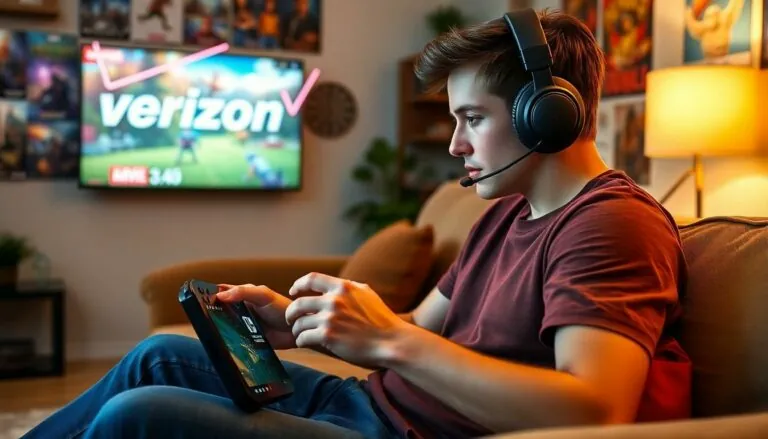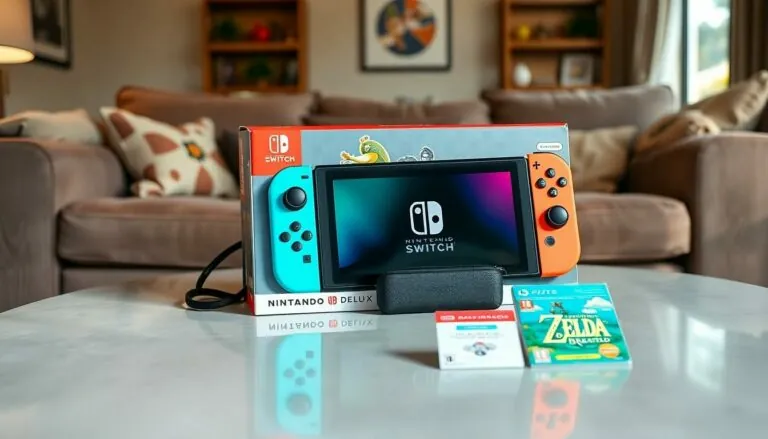Table of Contents
ToggleWhen the gaming marathon is interrupted by a low battery warning, it’s enough to send any gamer into a panic. The Nintendo Switch controller is a trusty sidekick, but like all heroes, it needs a recharge to keep saving the day. Luckily, charging it is as easy as pie—if pie were made of electrical currents and USB cables.
Understanding Nintendo Switch Controllers
Nintendo Switch controllers come in various types, each designed to enhance the gaming experience. Understanding these options helps gamers select the best controller for their needs.
Types of Controllers
Two primary types of controllers exist for the Nintendo Switch: Joy-Con controllers and the Pro Controller. Joy-Cons attach directly to the console and allow for versatile play styles, whether in handheld mode or as separate controllers. Pro Controllers offer a more traditional gaming experience with enhanced ergonomics and button layout, appealing to players who prefer a more robust design.
Key Features
Key features of Nintendo Switch controllers enhance functionality and gameplay. Motion controls allow for immersive interactions, making games more engaging. Each controller provides a built-in rechargeable battery to extend playtime. The ability to customize button mapping caters to personal preferences, improving comfort and performance. Improved connectivity ensures minimal lag during gameplay, promoting a seamless experience.
Charging Options for Nintendo Switch Controllers
Charging Nintendo Switch controllers involves two primary options: wired and wireless charging. Each method offers convenience and flexibility depending on the user’s preference.
Wired Charging
Wired charging connects directly to the Nintendo Switch dock or any USB power source. Users can utilize the included USB-C cable for this method. Joy-Con controllers charge when attached to the Nintendo Switch console or a charging grip. The Pro Controller also features a USB-C port for quick power-ups. Charging time varies; usually, a full charge takes about six hours. A quick check on battery status can provide reassurance during gaming sessions.
Wireless Charging
Wireless charging provides a more streamlined approach for those who prefer a cable-free experience. Using a compatible charging dock simplifies the process for Joy-Con or Pro Controllers. Players place the controllers on the dock, allowing for automatic charging without any plugging. Charging pads are available widely and can recharge multiple controllers simultaneously. Typically, this option is favored for its convenience, as users can swap controllers easily without dealing with cables. Charge times through docks may vary, but they generally align closely with wired options.
How to Charge a Nintendo Switch Controller
Recharging a Nintendo Switch controller is straightforward, with multiple methods available. Both wired and wireless charging options cater to different user preferences.
Using the Dock
Using the Nintendo Switch dock for charging is simple and efficient. When attached to the dock, Joy-Con controllers recharge automatically while the console powers on. The Nintendo Switch Pro Controller also charges via the dock, utilizing the USB-C port. It typically takes around six hours to reach a full charge through this method. This approach allows gamers to keep everything organized by using a single station for both console and controllers.
Using a USB Cable
Charging via a USB cable offers flexibility. Connect the controller directly to a USB power source, such as an adapter or a laptop. With the Pro Controller, users can plug in the USB-C cable to initiate charging. Joy-Con controllers can also charge when placed in a charging grip connected to a power source. Charge time remains similar to that of the dock, allowing for quick power-ups even during gaming sessions.
Tips for Maintaining Battery Life
Maintaining battery life for Nintendo Switch controllers ensures longer gaming sessions. Follow these effective strategies to help prolong the controller’s lifespan.
Best Charging Practices
Prioritize keeping the controller charged between gaming sessions. Using the official Nintendo charging cables guarantees optimal performance. Charge controllers immediately after use to prevent battery drain. Avoid letting the battery fully deplete, as this can decrease overall longevity. Turn off the controller when not in use to save power. Store controllers in a cool and dry environment, which promotes battery health. Regularly check for firmware updates to improve efficiency.
Common Charging Mistakes
Overcharging the controller can lead to damage over time. Connecting the controller to an incompatible charger diminishes charging efficiency. Ignoring low battery warnings often results in sudden shutdowns. Leaving controllers plugged in overnight creates unnecessary strain on the battery. Letting the battery drain completely before charging can decrease its lifespan. Failing to use the official charging accessories may lead to performance issues. Always refer to user manuals for proper charging guidelines.
Conclusion
Keeping Nintendo Switch controllers charged is essential for uninterrupted gaming. Whether using wired or wireless methods players can easily ensure their controllers are ready for action. With options like charging grips and USB-C connections users can select the most convenient charging solution for their needs.
By following best practices for battery maintenance and avoiding common pitfalls players can extend the life of their controllers. Staying proactive about charging and managing battery health allows for longer gaming sessions and a more enjoyable experience overall. Embracing these tips will lead to countless hours of gameplay without the worry of low battery warnings.






